GrabCAD

Double Bubble Lunar Heliostat
by GrabCAD
Last crawled date: 2 years ago
This design is an inflatable heliostat with a very simple, robust deployment mechanism.
It is inspired by the fact that two soap bubbles stuck together with equal pressure have a perfectly flat wall between them.
The rover features a photovoltaic-coated enclosure on top that opens to reveal an uninflated clear plastic membrane in the shape of two soap bubbles stuck together, with the wall between them made of reflective mylar, or a similar flexible, highly reflective material.
When the two "bubbles" inflate to the same pressure, the reflective surface between them is naturally stretched to be a highly flat 10 sq. m surface capable of reflecting light long distances into a crater.
Inside one of the bubbles is an inner "carriage" with ball bearings and magnets that align with a similar lower carriage affixed to the top of the rover. Magnets hold the inner and lower carriage bearings together, and therefore holds one of the bubbles firmly to the rover. On the lower carriage, one of the bearings is a drive wheel that can rotate, allowing the double bubble to be arbitrarily rotated 360 degrees about the vertical axis, and 180 degrees about a horizontal axis.
A sun sensor affixed to the center of the reflective mirror (with a power/data cable integrated into the mirror, leading down to the inner carriage) gives the rover feedback about sun position, allowing for accurate sun tracking. The back of the sun sensor features a high visibility pattern that can be tracked by a wide-angle camera on the inner carriage, which allows tracking of bubble orientation. Together with target direction information from remote operators, the rover has enough information to accurately orient the bubbles.
A unique extra capability of this design is that by merely altering the relative pressure in the two bubbles, the reflective surface can easily be made slightly concave or convex, allowing the rover to concentrate or disperse the light over an arbitrary area in the crater if desired.
Measurements, notes, and other considerations:
- Each of the two partial bubbles will have a diameter of 4.3 meters.
- The mirror will have a diameter of 3.7 meters.
- We estimate for a bubble material thickness of 0.4 mm, the bubble/mirror will weigh approximately 50 kg. The rover will need to weigh more than 80 kg to prevent the bubbles from unbalancing the rover.
- In order to inflate the bubbles to 0.5 PSI twice over (to allow for extra gas to replace leakage), we need a 6" diameter x 24" long gas cylinder, which easily fits on the rover.
- The inner carriage may require power to transmit sun sensor data to the main rover, and to heat the bearings - this can easily be provided by an integrated inductive charging mechanism.
Dust settling on the front bubble may reduce the light transmitted into the crater. It is possible that a simple vibration motor could intermittently vibrate the entire double bubble membrane, shaking dust off the surface. Thin embedded wires within the plastic membranes might also be used to dissipate electric charge and reduce dust accumulation.
Credit: The base rover for this design is a modified version of this rover: https://grabcad.com/library/mars-rover-prototype-1
Thanks to Mark Avara, Lissa Riley, and Aaron Bloomfield for helping me think through the design.
It is inspired by the fact that two soap bubbles stuck together with equal pressure have a perfectly flat wall between them.
The rover features a photovoltaic-coated enclosure on top that opens to reveal an uninflated clear plastic membrane in the shape of two soap bubbles stuck together, with the wall between them made of reflective mylar, or a similar flexible, highly reflective material.
When the two "bubbles" inflate to the same pressure, the reflective surface between them is naturally stretched to be a highly flat 10 sq. m surface capable of reflecting light long distances into a crater.
Inside one of the bubbles is an inner "carriage" with ball bearings and magnets that align with a similar lower carriage affixed to the top of the rover. Magnets hold the inner and lower carriage bearings together, and therefore holds one of the bubbles firmly to the rover. On the lower carriage, one of the bearings is a drive wheel that can rotate, allowing the double bubble to be arbitrarily rotated 360 degrees about the vertical axis, and 180 degrees about a horizontal axis.
A sun sensor affixed to the center of the reflective mirror (with a power/data cable integrated into the mirror, leading down to the inner carriage) gives the rover feedback about sun position, allowing for accurate sun tracking. The back of the sun sensor features a high visibility pattern that can be tracked by a wide-angle camera on the inner carriage, which allows tracking of bubble orientation. Together with target direction information from remote operators, the rover has enough information to accurately orient the bubbles.
A unique extra capability of this design is that by merely altering the relative pressure in the two bubbles, the reflective surface can easily be made slightly concave or convex, allowing the rover to concentrate or disperse the light over an arbitrary area in the crater if desired.
Measurements, notes, and other considerations:
- Each of the two partial bubbles will have a diameter of 4.3 meters.
- The mirror will have a diameter of 3.7 meters.
- We estimate for a bubble material thickness of 0.4 mm, the bubble/mirror will weigh approximately 50 kg. The rover will need to weigh more than 80 kg to prevent the bubbles from unbalancing the rover.
- In order to inflate the bubbles to 0.5 PSI twice over (to allow for extra gas to replace leakage), we need a 6" diameter x 24" long gas cylinder, which easily fits on the rover.
- The inner carriage may require power to transmit sun sensor data to the main rover, and to heat the bearings - this can easily be provided by an integrated inductive charging mechanism.
Dust settling on the front bubble may reduce the light transmitted into the crater. It is possible that a simple vibration motor could intermittently vibrate the entire double bubble membrane, shaking dust off the surface. Thin embedded wires within the plastic membranes might also be used to dissipate electric charge and reduce dust accumulation.
Credit: The base rover for this design is a modified version of this rover: https://grabcad.com/library/mars-rover-prototype-1
Thanks to Mark Avara, Lissa Riley, and Aaron Bloomfield for helping me think through the design.
Similar models
grabcad
free

NASA Lunar TORCH Heliostat
...e, yet robust design of the heliostat also allows for low-cost production.
for more details on the design, kindly check the pdf.
grabcad
free

Dual Mirror Heliostat Lunar TORCH
...the mirrors' elevation angle is from 0 to 180 degree. the solar position sensor is located at the centre of the solar mirror.
grabcad
free

Chandran Heliostat Rover
...e rover
low gain antenna and uhf antenna is also present to effectively transmit and receive data from rover / base or to earth
grabcad
free

Lunar D-MAER
...own. the bottom mirror tracks the rover, and redirects the circular beam of light to the solar panels on the rover in the crater.
grabcad
free

Lunar Torch with inflatable structure
...in opposition at the mirror film there is a similar system of tie rods. with the inflatable chambers deflated...
grabcad
free

Lunar Torch with inflatable structure
...in opposition at the mirror film there is a similar system of tie rods. with the inflatable chambers deflated...
grabcad
free

L - LIGHT System
...tracker measures the sun's angular elevation. the dual-axis operates similary to a single-axis, but it collects maximum solar energy...
grabcad
free

Azimuth/Elevation Bearing w/ gears
...d elevation. originally meant for a heliostat (large mirror array to follow the sun). suitable for mounting large satellite dish.
grabcad
free

Capsule
...iostat is an independent unit from the rover and it can be mounted in it. the weight of the capsule approximately ~200kg on earth
grabcad
free

🌖Torch
... m2
solar panels: 2.8 m2
heliostat mass: up to 100 kg
rover model by daniel loera (🙏)
https://grabcad.com/library/mars-rover-28
Heliostat
3d_export
$199

Solar Power Plant 3D Model
...plant 3d model 3dexport solar power plant industrial helios heliostat modern energy station tower sun panel farm solar power...
thingiverse
free

Heliostat by DamianPaton
...cale from the heliostat by arisolar (all right reserved). this model shows the new 2 axis motion system (spinning and elevation).
thingiverse
free

Conie the Heliostat by Cod
...e it is rain protected.
stepper motore i've used 42byghw208. for use with inductive limit switches(lj12a3-4-z/by)
have fun!
thingiverse
free

Heliostat Solar Sensor support structure by Daedelus
...nting at the brightest spot.
the two parts are superglued together so that the smaller part functions as an attachment bracket.
thingiverse
free
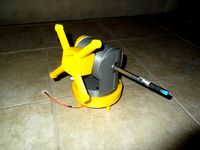
Pan Tilt Mechanism for 28BYJ-48 Motors by zimirken
...towards an ideal design for a heliostat. speaking of heliostat, included is a mounting bracket for a mirror or...
thingiverse
free

solar sensor one axis by arduinomastercomau
...upload another design that is more suitable for a heliostat ...
free3d
$30

TURBOSPAIN SOLAR PLANT
...it uses an array of flat, movable mirrors (called heliostat) to focus the sun's rays upon a collector tower...
thingiverse
free
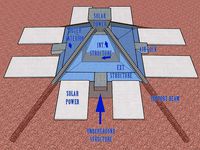
Mars Habitat Concept by sjwaldron
...dual solar collection system, both solar power tower with heliostat and photovoltaic type devices would be...
grabcad
free

lunar heliostat
...lunar heliostat
grabcad
lunar heliostat
cg_trader
$33

AT heliostat
...g formula’s. see the 'purchasing_the_models' link at appropedia's at_cad_team for additional information on the model
Lunar
3ddd
free

erba lunare
...erba lunare
3ddd
erba
erba lunare
turbosquid
$10

Suppressor Lunar
...quid
royalty free 3d model suppressor lunar for download as on turbosquid: 3d models for games, architecture, videos. (1380407)
3ddd
$1
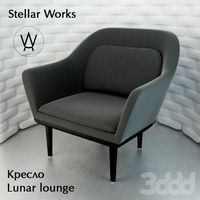
Lunar lounge
...ounge
3ddd
stellarworks
модель кресла lunar lounge от производителя stellar works. габаритные размеры 850x710x800. 23k полигонов.
turbosquid
$62
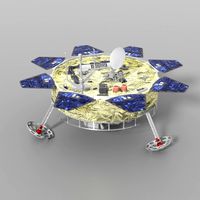
Lunar Lander
... free 3d model lunar lander for download as obj, fbx, and lxo on turbosquid: 3d models for games, architecture, videos. (1185844)
turbosquid
$10
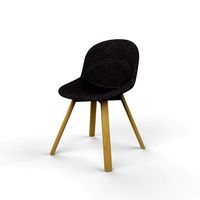
Lunar Chair
...y free 3d model lunar chair for download as 3ds, obj, and dae on turbosquid: 3d models for games, architecture, videos. (1219708)
3ddd
free
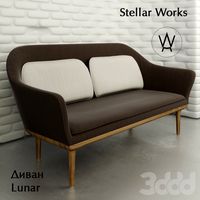
Диван Lunar
...d710xh800mm. в архиве есть текстуры, файлы в 2011 и 2014 версиях и obj-файл. 8,5k полигонов. turbo-/meshsmooth при необходимости.
turbosquid
$39

Lunar Sword
...e 3d model lunar sword for download as max, obj, fbx, and dae on turbosquid: 3d models for games, architecture, videos. (1440758)
turbosquid
$10
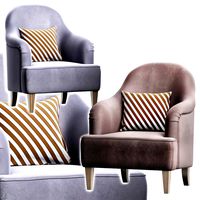
Lunar Armchair
...del lunar armchair by jamni for download as max, fbx, and obj on turbosquid: 3d models for games, architecture, videos. (1566066)
turbosquid
$1

Lunar car
...e 3d model lunar car for download as 3ds, obj, md3, and blend on turbosquid: 3d models for games, architecture, videos. (1209060)
turbosquid
$99
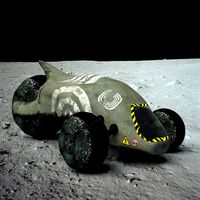
Lunar Plow
... available on turbo squid, the world's leading provider of digital 3d models for visualization, films, television, and games.
Bubble
3ddd
free
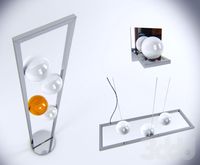
Bubble
...bubble
3ddd
bubble
design_connected
$20

Bubbles
...bubbles
designconnected
smallaccents bubbles computer generated 3d model.
3ddd
$1
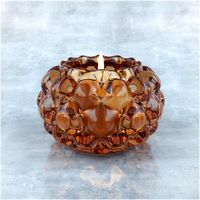
Bubbles
...bubbles
3ddd
подсвечник , свеча
подсвечник bubbles.
в архиве файлы fbx и obj.
design_connected
$18
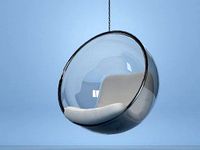
Bubble
...bubble
designconnected
adelta bubble lounge chairs computer generated 3d model. designed by eero aarnio.
design_connected
$4
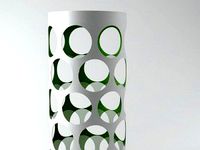
Bubble
...bubble
designconnected
derin bubble shelves and storage computer generated 3d model. designed by aziz sariyer.
3ddd
$1
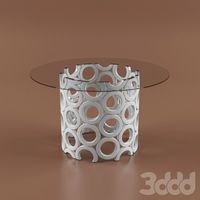
Bubbles
...les
3ddd
журнальный , круглый
журнальный столик bubbles
размеры 90-90-52
матерьялы vray
design_connected
$9

Bubble
...bubble
designconnected
la femme et la maison bubble computer generated 3d model. designed by zupanc, nika.
3ddd
$1

Bubble Chandelier
...ier
3ddd
bubble , pelle designs
потолочный светильник bubble chandelier by pelle designs
3ddd
$1
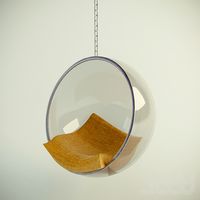
Bubble Chair
...bubble chair
3ddd
подвесное
bubble chair
turbosquid
$5

bubble
... available on turbo squid, the world's leading provider of digital 3d models for visualization, films, television, and games.
Double
3ddd
free

Double
...double
3ddd
double , sicis
диван double от итальянской фабрики sicis next art
3d_ocean
$5

double stairs
...double stairs
3docean
double stairs
double stairs
3d_export
$5

double handle
...double handle
3dexport
double handle
3d_export
$5

double fastener
...double fastener
3dexport
double fastener
3ddd
$1

double bed
...double bed
3ddd
двуспальная
double bed
design_connected
free
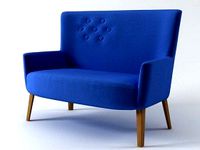
Chair Double
...chair double
designconnected
free 3d model of chair double
3ddd
$1
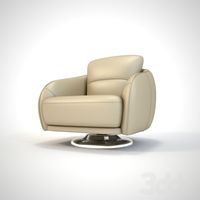
Double Leaves
...double leaves
3ddd
double leaves
кресло китайской фабрики double leaves. vray, 3dmax 2013, гамма 2.2, текстуры в комплекте.
3ddd
free
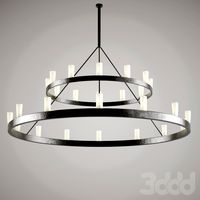
Люстра Double
...люстра double
3ddd
double , david chipperfield
2004
размеры в архиве
3d_export
free

couch - double
...couch - double
3dexport
couch double with texture and .psd files for personal customization
3d_export
$10

double layer double speed chain
...d chain
3dexport
double layer speed chain (design very detailed) 3d model drawing model file reference using solidworks software
